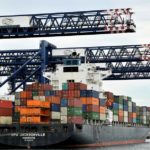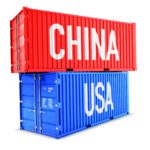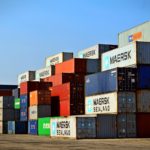The 4 factors creating ASEAN opportunities for Australian firms

There are many drivers of growth in the ASEAN region but four factors in particular are transforming ASEAN’s business landscape.
The region’s expanding cities are accelerating economic growth, improving productivity and boosting demand; a growing consumer class has access to greater purchasing power; innovation and digital disruption are creating the world’s fastest-growing online market for goods and services and deepening integration and stronger connectivity are boosting trade links.
This final factor includes the impact of Australia’s Free Trade Agreements, making it easier to conduct business and supporting stronger regional value chains.
Expanding cities
Over one-third of ASEAN’s population now live in cities, contributing more than two-thirds of the region’s GDP. Perhaps 90 million more people will live in these teeming cities by 2030, potentially adding more than US$500 billion to ASEAN’s GDP.
Already some of ASEAN’s largest cities, Bangkok, Jakarta and Kuala Lumpur rank as high-income status global conurbations. ASEAN’s growing middle-weight regions and second-tier cities, with populations of between 500,000 and five million people, are drivers of further growth and around 50 ASEAN cities already have more than half a million residents.
Special economic and export processing zones and clusters around larger cities also create economies of scale and provide additional benefits for investors.
Future cities in ASEAN will require innovative and specialist services, products and technologies to address urban challenges such as overcrowding and congestion, infrastructure needs and pollution. Fast growing ASEAN cities will also demand substantial investment across the region in new and retrofitted major transport infrastructure, power and water utilities and tourism facilities.
In addition to private investors and ASEAN countries’ own resources, investment is flooding in from China’s Belt and Road Initiative, Japan’s Partnership for Quality Infrastructure, and multilateral development banks such as the Asian Infrastructure Investment Bank, the Asian Development Bank and the World Bank, for market-ready proposals.
Australia’s mid-sized firms are well placed to service these thriving urban developments. Australian firms can provide building materials and consulting expertise in integrated precinct planning and environmental design, for example, as well as intelligent transport systems, renewable energy and storage solutions.
Australian SMEs can also offer input to efficient public services and civil safety, smart environmental technologies, including for air quality control, and services to protect critical public infrastructure.
ASEAN’s burgeoning consumer class
Mass urbanisation across ASEAN is accompanied by rapid expansion in the middle class.
Six ASEAN countries – Cambodia, Indonesia, Laos, Myanmar, the Philippines and Vietnam – are classified by the World Bank as lower middle-income economies, defined as those with a gross national income per capita between US$1,006 and US$3,955. These countries alone account for over 80% of ASEAN’s total population of 637 million.
As these countries continue to urbanise, the number of middle class households, with an annual income in excess of US$10,000, is forecast to more than quadruple across the region to 161 million households by 2030.
The growth of middle class households is driving substantial increases in consumer demand. The economic diversity across the ASEAN region reinforces the importance of looking at specific market opportunities.
For instance, while major cities will remain significant drivers of demand, rising consumer power is likely to be most pronounced in satellite and second-tier cities. Research demonstrates that several sub-regions in ASEAN will have greater consumer sales growth than entire countries.
ASEAN ‘urbanites’ of the future will also be younger than today, with more discretionary spending power and a greater demand for premium products.
Across the region, there’s been a significant shift in recent years from buying staple commodities towards higher-value and quality food, dairy and agricultural products. Australian companies can benefit from these shifting consumer patterns by taking advantage of Australia’s reputation as a premium food and beverage supplier.
Companies looking to enter ASEAN markets should consider presenting a narrative to consumers which highlights Australia’s food safety credentials. As consumer patterns change, there will therefore be opportunities for Australian exporters in the food and beverage, agriculture and agribusiness, services including telecommunications and healthcare, and education sectors.
Australian businesses should also consider emerging mega-trends in the retail and tourism sectors. Intra -ASEAN tourism is significant, with around 44% of tourist arrivals coming from within the ASEAN region. Intra-ASEAN tourism has been growing at a rapid eight per cent per year since 2011.
Cultivating a labour force with the skills and training to meet the demands of the growing consumer class is a priority for ASEAN.
Student and labour mobility are central to deeper economic integration and developing a skilled workforce. ASEAN countries are strengthening their education and training systems. This includes developing a common framework to help compare qualifications and make it easier for workers to move to jobs that match their skills. Australian education providers and firms with relevant experience are well placed to support this ambition.
English is the common language across all countries and English language courses are in high demand. Australia is considered by ASEAN as a world leader in education, qualifications frameworks and qualification recognition. This reputation benefits Australian education and service providers offering in-country solutions that equip students with vocational training and leadership skills.
Population growth, rising incomes and improved access to healthcare has led to strong demand for health services across ASEAN. There’s scope for Australian businesses to offer intelligent health solutions around services, technology, equipment and training.
Innovation and digital transformation
ASEAN governments are investing heavily to capitalise on the benefits of digital transformation and the goal of ASEAN’s ICT Master Plan 2020 is to create a digitally -enabled region that’s secure, sustainable and transformative.
This 2020 Master Plan has five key themes. notably the pursuit of an accessible, inclusive and affordable digital economy. Information and Communications Technology (ICT) will be used to support digital inclusion of communities across the region and the deployment of next-generation ICT will be an enabler of growth.
The plan also aims for sustainable development through smart city technologies and notes that ICT will support a single regional market to facilitate integration and lower business costs. Secure digital marketplaces and safe online communities should also facilitate and promote regional digital trade.
ASEAN citizens have seized the digital opportunity thanks to cheaper and more accessible devices and improved connectivity. The region has ‘leapfrogged’ now obsolescent levels of technology to embrace cutting edge techniques. A number of ASEAN countries have skipped the development of landline telephones in their regions, for example, driven by the proliferation of mobile phones. The arrival of international mobile network operators to Myanmar in 2014 helped drive the fastest rollout of mobile phones in history, for example, with approximately 30 million SIM cards in use by mid-2015
Smartphones are becoming more important as a platform to deliver education, government and healthcare services to consumers, particularly in remote and rural communities. In the banking sector, there’s demand for mobile banking and payments, online purchases and other mobile-enabled transactions. In some of ASEAN’s developing economies, where most of the population has never had a bank account, people have jumped straight into using mobile money transfers and other modern banking solutions.
Southeast Asia is currently the world’s fourth largest internet market, with 260 million internet users. Google estimates that around 3.8 million new Southeast Asian users come online every month, making it the fastest -growing internet market in the world, and forecasts there will be 480 million internet users by 2020.
E-commerce is another emerging channel for Australian products to capture market share in ASEAN. Although e-commerce use in the region remains relatively low, it presents huge prospects for growth E-commerce in ASEAN is expected to grow at a compound annual growth rate of 14% over the next five years, equalled only by India. By contrast China, the world’s largest e-commerce market, is predicted to grow at 4%.
Enthusiastically embraced by a youthful population, online platforms will facilitate transactions in second and third-tier cities that have limited access to large bricks and mortar stores as internet access, payments systems and transport logistics improve.
Amazon, Lazada and eBay have well established e-commerce platforms in ASEAN for servicing middle class consumers. Australia’s FTAs with ASEAN countries have dedicated chapters that help to facilitate e-commerce, promote cross -border digital trade and build confidence in the online environment.
Despite this significant digital uptake, ASEAN countries remain at different levels of digital development, with some countries still outstripping others in terms of reach and sophistication. Challenges in some areas include scarce internet infrastructure, low penetration rates and slow internet speeds.
Demand for healthcare services is expected to surge in ASEAN, due to growing numbers of older people, income growth, the growing prevalence of chronic diseases, urbanisation and government initiatives such as universal healthcare coverage for citizens. The number of private hospitals and clinics are projected to grow to meet the rising demand for healthcare services and shrink the gaps in healthcare delivery.
A shortage in skilled workers is already proving to be a challenge across the region, with both public and private healthcare providers looking for ways to raise workforce skills and standards. Families are also embracing modern aged care services which offer greater choice and higher standards of care than traditional home-based care.
These demographic and cultural changes are driving consumer demand for quality healthcare and Australian companies can partner on new infrastructure projects and provide the supporting services, skills and management needs of these growing health industries.
Integration and connectivity
ASEAN’s economic growth, social progress and cultural development have been remarkable since its formation in 1967. The vision of an ASEAN Economic Community (AEC) set out in 2015 marked a further step forward for the region. ASEAN’s future success will be defined by ‘connectivity’, the two-way movement of goods, services, finance, people, data and communication.
According to the McKinsey Global Institute Connectedness Index, Singapore is the most connected country in the world, while Malaysia, Thailand and Vietnam are among the top 40. Connectivity, both real and virtual, is the idea driving ASEAN economic integration.
For example, the ASEAN Single Window will expedite cargo clearance and enable electronic exchange of border documents. Indonesia, Malaysia, Singapore, and Thailand are conducting pilot tests using the ASEAN Single Window to exchange electronic certificates of origin and Brunei and Vietnam are expected to join shortly.
Australia is a strong supporter of ASEAN’s connectivity. Increasing interconnectedness within and between companies in different ASEAN markets will drive growth, create stronger markets and greater economic opportunities. However, much work remains to reduce infrastructure bottlenecks and barriers to cross-border trade.
A one-stop shop approach to border, customs and immigration, supported by our aid program, has slashed passenger and goods crossing times between Vietnam and Laos at the Lao Bao -Dansavanh border by half, for example. Another crossing will open soon at the Mukdahan -Savanakhet crossing between Thailand and Laos to further boost trade.
Greater connectivity will lift ASEAN’s reputation as a hot-spot for regional value chains integrated into global supply routes. Australian firms which specialise in mining, advanced manufacturing and transport and financial services are already taking advantage of ASEAN as an international trading hub.
While intra-ASEAN trade is rising, it remains relatively low as a percentage of the region’s total. Enhanced regional connectivity has the potential to unlock significant growth and Australian businesses have a range of FTAs they can use to take advantage of ASEAN’s connectivity agenda.
AANZFTA provides market access commitments to ASEAN countries and sets consistent trade and investment rules across our region. Our bilateral FTAs with Singapore, Malaysia and Thailand add value to the benefits Australian businesses receive under AANZFTA.
Australia continues to engage in an active agenda to open markets and provide greater opportunities for Australian businesses accessing ASEAN countries.
These include the Regional Comprehensive Economic Partnership (RCEP) negotiations involving ASEAN and ASEAN’s FTA partners (China, Japan, India, Republic of Korea, New Zealand and Australia) and the Indonesia-Australia Comprehensive Economic Partnership Agreement (IA-CEPA) as well as the recently agreed successor to the Trans-Pacific Partnership.
These negotiations should to simplify and strengthen the regional trade and investment environment, and create further opportunities for Australian business in key regional markets.
For more information, see the ASEAN Now report from Australia Unlimited from which this data was derived.








